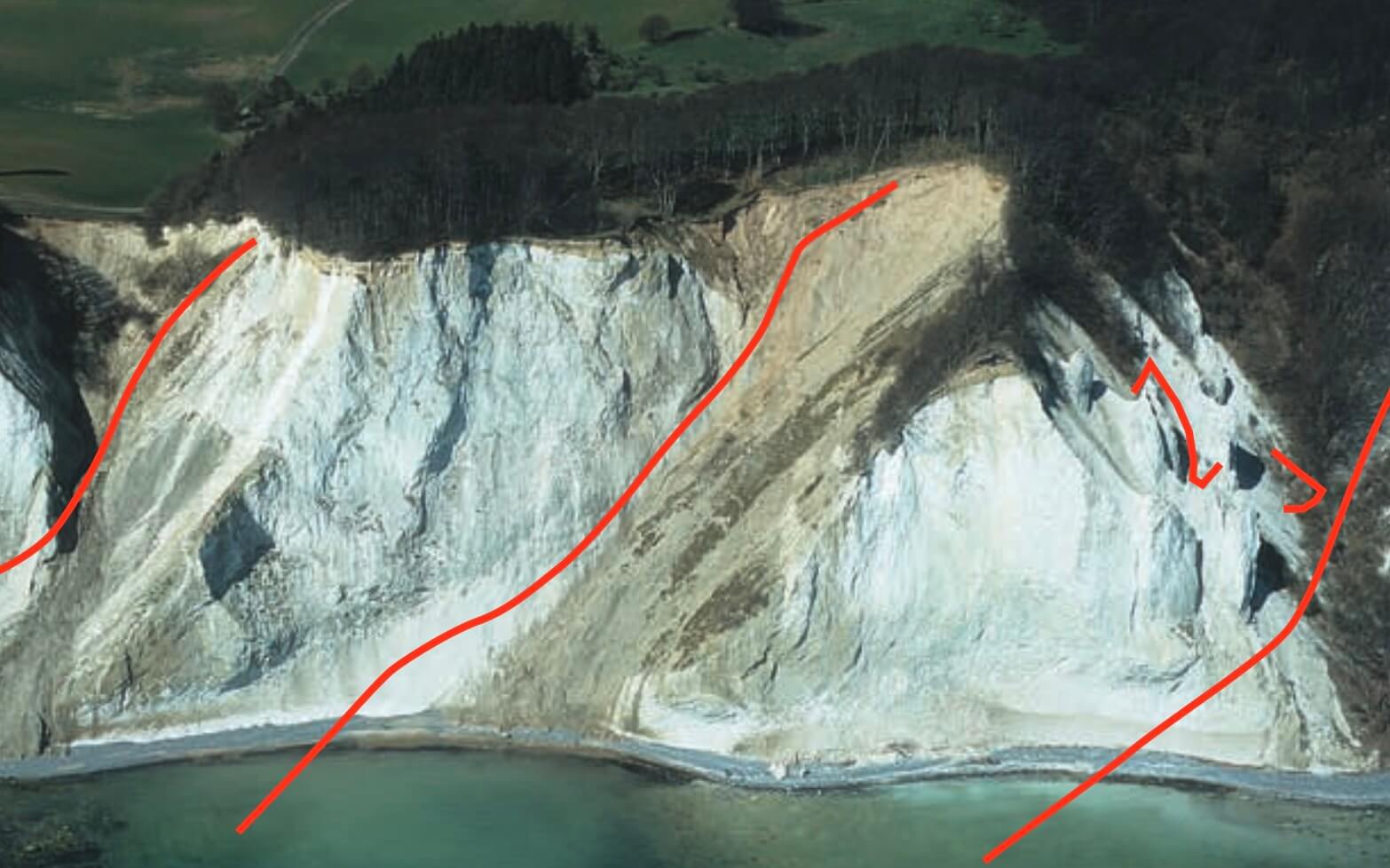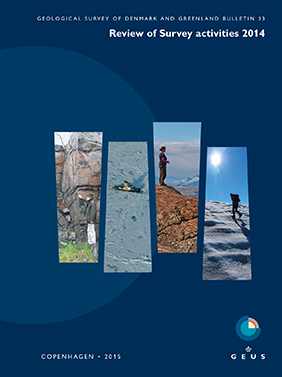
How to Cite
Share
Abstract
Cross sections of glaciotectonic complexes are exposed in coastal cliffs in Denmark, which allow structural studies of the architecture of thin-skinned thrust-fault deformation (Pedersen 2014). However, the basal part of the thrust-fault complex is never exposed, because it is located 50 to 100 m below sea level. It is in the basal part the most important structure – the décollement zone – of the complex is found. The décollement zone constitutes the more or less horizontal surface that separates undeformed bedrock from the displaced thrust-sheet units along the décollement level. One of the most famous exposures of glaciotectonic deformations in Denmark is the Møns Klint Glaciotectonic Complex. The structures above sea level are well documented, whereas the structures below sea level down to the décollement level are poorly known. Modelling of deep structures was carried out by Pedersen (2000) but still needs documentation. A glaciotectonic complex affecting comparable rock units, such as the chalk at Møns Klint, was recently recognised in seismic sections from Jammerbugten in the North Sea (Fig. 1). These sections provide an excellent opportunity for comparable studies of the upper and lower structural levels in thin-skinned thrust-fault deformation, which is discussed in this paper with examples from three major glaciotectonic complexes.
How to Cite
Share
Copyright (c) 2015 Stig A Schack Pedersen, Lars Ole Boldreel

This work is licensed under a Creative Commons Attribution 4.0 International License.
Downloads
Editors Ole Bennike, Adam A. Garde and W. Stuart Watt
This Review of Survey activities presents a selection of 20 papers reflecting the wide spectrum of activities of the Geological Survey of Denmark and Greenland, from the microscopic to the plate-tectonic level.
The Survey’s activities in Denmark are illustrated by eight articles [...]









